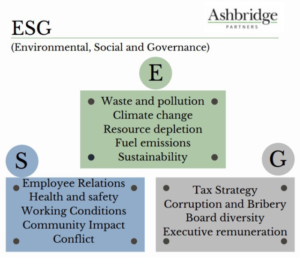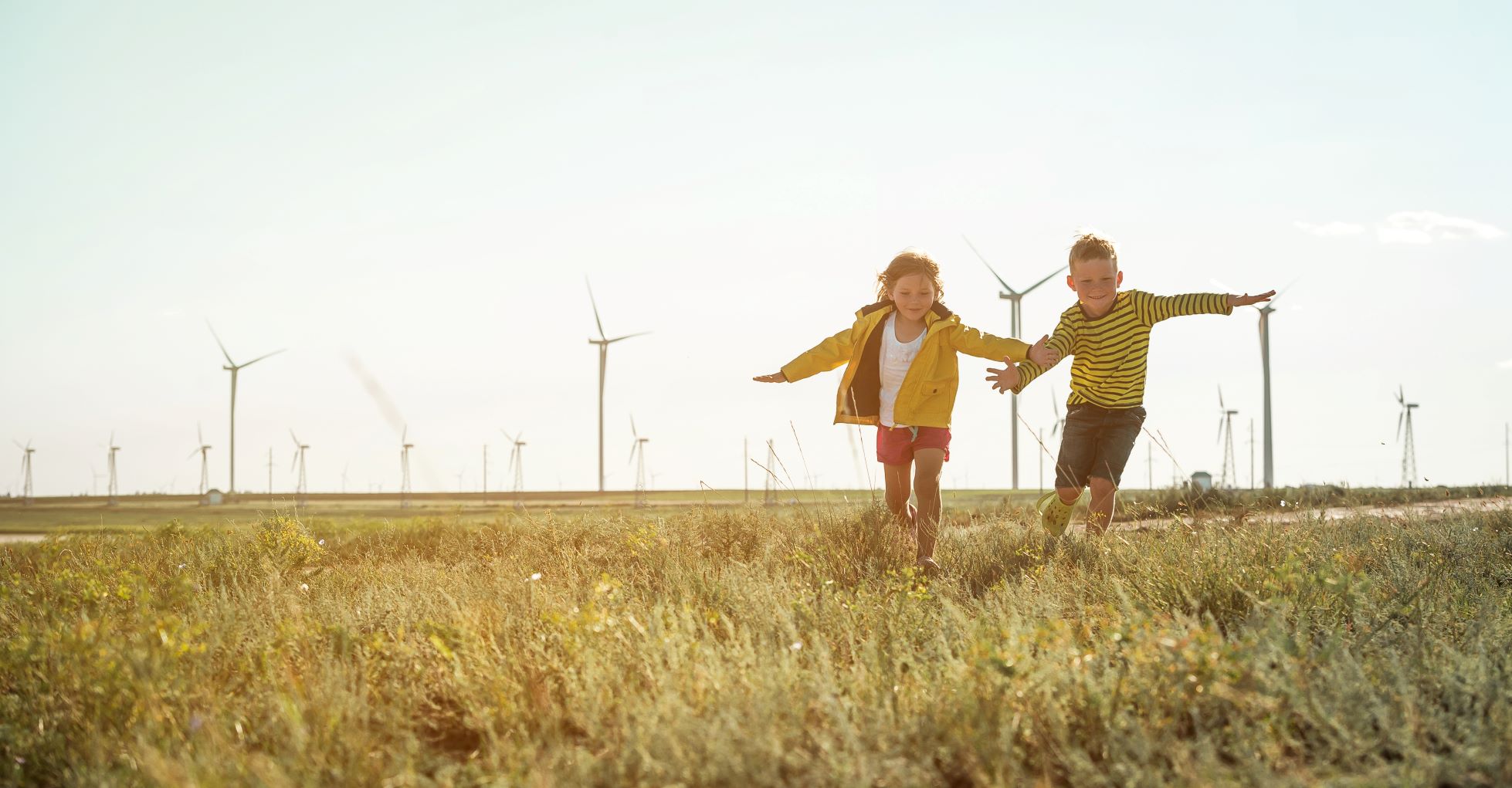Climate Change, ESG and Rural Investment – Green for Go

Following the June G7 Summit, Tom Windett unpacks ESG, explains its importance, predicts its place in the future, and invites Josh Stratton, Wiltshire Farmer, for comment
ESG – Easy as ABC?
ESG (environmental, social and governance) indicators are three of the main criteria that ethically responsible investors factor into decision making. They are now a fundamental building block of finance and investment policy.

What do I need to know about ESG?
“Impact investing” – investment with social impact as well as financial return as its goal – has been a growing trend over the last 20 years. It was initially seen as a niche sector, but today the term “ESG” is ubiquitous – PwC forecast that ESG-focused funds could hit 57% of total market share by 2025.
While well-established in the investment sector, in the debt markets it is a much newer concept, but one which is rapidly playing catch-up. Shareholders are demanding greater levels of commitment to the environment from global financial institutions – qualitative promises around ESG credentials now need to be matched by quantitative results. This translates from the actions of businesses themselves, to their products and services, and ultimately to the activities of their clients.

What are lenders doing about ESG?
As large global businesses, banks employ many thousands of staff, with a substantial real estate portfolio – and the carbon footprint to go with it. The pandemic and resulting remote-working environment have been a trigger to reduce office space, cut travel and focus on employee wellbeing. These measures will become part of the business plan long-term – with the happy coincidence that they improve the ESG credentials of the business at the same time.
There are other areas where more pro-active initiatives are developing, for example:
- Lloyds have committed to planting 10,000,000 trees in conjunction with the Woodland Trust
- HSBC have invested in Pollination – a climate change advisory and investment firm – and have committed to becoming carbon net zero within their own operations by 2050
- Lombard Odier have a clearly defined Natural Capital strategy – their partnership with Oxford University involves the Circular Bioeconomy Alliance
The trend is now growing quickly, and it needs to – the 35 largest global banks who factor in ESG criteria have simultaneously provided $2.66 trillion of finance into fossil fuel industries since the 2016 Paris Agreement.
In the institutional markets, insurers and pension fund debt providers now agree and incorporate ESG targets for borrowers within their loan agreements, for example, in a similar way to the inclusion of financial covenants and undertakings.
How does ESG affect me?
Borrowers are now well-used to complying with increasing obligations around financial transparency. The same type of disclosure will in future apply to areas such as social responsibility, natural capital, carbon footprint and energy efficiency. Lenders will be keen to know what contribution your business will make environmentally, both positive and negative, looking at the loan purpose and the impact the investment will make. In a nutshell, the “greener” you are, the more positively a lender may view your application – and vice versa.
Until recently, the emphasis has been on the institutional borrower – especially large landlords, infrastructure projects and corporates. Deal size has been at the upper end of the market – although there have been notable exceptions amongst lenders such as Triodos, an ethical bank based in the Netherlands, and CAF Bank, the Charities Aid Foundation. The trend is now beginning to extend across the wider market.
In March, Virgin Money launched a sustainability-linked loan product which it claims is the first to be made available to all sizes of business. More innovation is bound to follow and competitive forces mean that more and more SMEs are likely to benefit from “green lending”. Importantly, there will also be an obligation to demonstrate minimum levels of compliance.

E for Environment – Green for Go?
Rural investors, including those looking at rural property for the first time, may be interested in other doors that ESG opens to them. 2021 sees the piloting of the UK government Sustainable Farming Incentive, and Local Nature Recovery and Landscape Recovery pilots will begin next year, all part of the UK’s 25 Year Environment Plan to reach net zero emissions by 2050.
British farmers and rural landowners could therefore be paid for delivering:
- clean water
- clean air
- thriving plants and wildlife
- protection from environmental hazard
- reduction of and adaptation to climate change
- beauty, heritage and engagement with the environment
The value of carbon, and the role landowners can play in its offsetting, is emerging as another area of growth globally. While embryonic, this is very interesting for the rural sector. In January 2021, Microsoft bought $500,000 worth of soil carbon credits from an Australian farming business to offset its own emissions. In the context of ESG accountability, this helps it reach its net zero goal by 2030. Could this be trendsetting?

What next for Farmers and Landowners?
Josh Stratton, Farmers Weekly finalist based in Wiltshire gives us his take:
Land ownership is no longer measured in tonnes of wheat. We look at every hectare to ensure it’s working hard for us which includes the development of solar fields.
Across all our farms, soil health and environmental management of the land shape all of our decision making. This is not just for altruistic reasons – profitability always flows from these decisions. Our factory floor is intensive arable combinable crop farming, but this only thrives from having a healthy base of soil
Outside of the factory floor, we manage our environmental enhancement just as intensively, with high yields of nectar, bird food and habitat from our downland, meadows and plots. All of this has to be measured, and we constantly check soil metrics (worm numbers and types, organic matter, trace elements) and environmental gains (birds and bee numbers). Going forward, we look to build on this data and use it to develop our brand and add value to our output. This output may be arable produce, but it may be commercial rentals or environmental schemes.
There is no doubt that we will be judged on our environmental output from land ownership and farming. We are embracing this and ensuring that a profitable and sustainable future for our business results from this.
What ESG trends do you forecast?
ESG criteria are not yet standardised, but industry benchmarks are likely to be here soon. These may be led by existing financial sector bodies such as the Loan Market Association and Ratings Agencies, with sector specialists as independent auditors. “Nature accounting” is a growing industry, involving carbon co-benefits, green bonds and environmental offsets. As time draws us closer to carbon-neutral benchmark years such as 2030 (UN Sustainable Development Goals) a regulatory framework becomes more and more likely. The UK government could theoretically force banks to stick to clear moral principle, or incur penalties, as global forces embolden shareholder voice. The concept of variable capital weighting rules for lenders, with favourable treatment of ESG-focused loan portfolios, is already being talked about quite widely – and it doesn’t take a great leap of faith to see that the converse could also follow.
In the rural economy, land agents and sector bodies such as the Country Land and Business Association (CLA) are leading the debate. They’re moving from a property-focused perspective and are investigating how existing schemes such as the Countryside Stewardship Scheme (CSS) and the transition to Environmental Land Management Schemes (ELMS) can help landowners to ‘monetise’ the concept of natural capital. Monitoring, assessing and reporting on this will be a growth sector, as will the provision of services to implement projects, by farmers, contractors and potentially by new businesses seeking to exploit market opportunities.

ESG Trends in the Global Village
Further afield, the Bank of New Zealand recently provided a sustainability-linked loan to members of a dairy farming group. Integrated ESG targets were part of the borrower’s obligations alongside standard financial covenants.
In the USA, “ag-tech” Indigo Ag has developed a carbon trading platform linking commercial buyers with farmer sellers, available for those businesses practicing regenerative farming practices. Buyers so far include J P Morgan, Barclays and IBM. It is early days for UK farmers, but initiatives such as these are on the very near horizon.
Tom’s Take On ESG
One thing is certain – ESG is here to stay, and landowners are well-positioned to benefit. For rural borrowers, opportunities are on the horizon, but they will come with obligations and requirements which go beyond the normal business plan. Borrowers will need to consider how a lender will review a request for funding in the context of their own ESG undertakings, which will almost certainly be new territory for most. If you’re well informed and prepared, there are benefits to be harvested.
Contact Us:
Want to know more about ESG criteria and rural investment opportunities? We welcome you to get in touch so we can support your ambitions:
